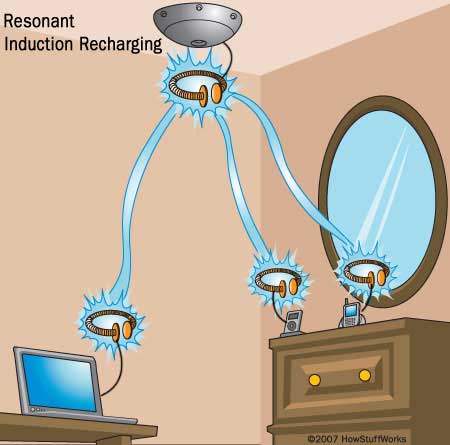
Wireless Inductance

Resonant Induction Recharging (howstuffworks.com,Wilson)
-
In 2006 a group of MIT researchers led by Marin Soljacic found a way to get around Tesla's theory of electromagnetic induction by instead of using induction, his team used magnetic resonance. (Johnson)
-
Magnetic Resonance, also called Nuclear Magnetic Resonance, is the ability for an atom placed in a magnetic field being able to absorb specific radio frequencies and microwave radiation. ("Magnetic Resonance")
-
This can be defined as hf=2μB
-
Using magnetic resonance allowed for energy to be more efficiently transfer more energy over a longer distance. ("How does")

Inductor Coil (howstuffworks.com, Wilson)
-
In order to do this the MIT researchers used special coils, like the one's in the picture above.
-
To do this form of energy transfer, both the source coil and the coiling receiving the energy must be at the same frequency, which is determined by the multiplying the capacitance value by the inductive value of the coil. ("How does")
-
This whole process is similar to how a cellphone antenna works with a satellite, only receiving intended conversations.(Johnson)
-
However, even with this technology it only works efficiently for about 12 feet and only 50-70 percent of the energy actually goes from the source of power to the thing thats suppose to be powered. (Higginbotham)
-
Some also believe this process is dangerous because Nuclear Magnetic Resonance involves the nuclei absorbing energy then radiating it out later.

Slide 1 (Title page) - Slide 2 - Slide 3 - Slide 4 - Slide 5 - Slide 6 (Conclusion) -Slide 7 (Bibliography)

